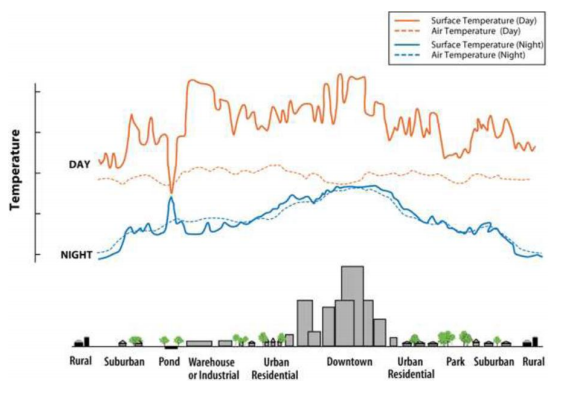The urban island effect

This hypothetical graph shows how daytime and nighttime temperature vary in the vicinity of a large city. Notice how daytime temperature is higher over heat-reflecting buildings and lower over a water body. The urban heat island effect causes cities to run warmer than surrounding rural areas, especially at night. Development produces heat islands by replacing vegetation, particularly forests, with pavement and other urban infrastructure. This limits plant transpiration, an evaporative process that helps cool plant leaves and also cools air temperatures, explained Robert Wolfe of Goddard, one of the scientists who developed the method.
Image Type
Category
Level
Geographic Area
Source
